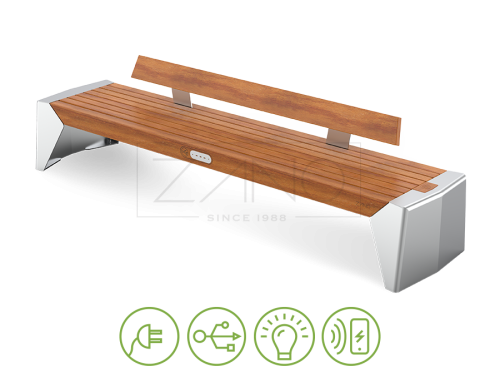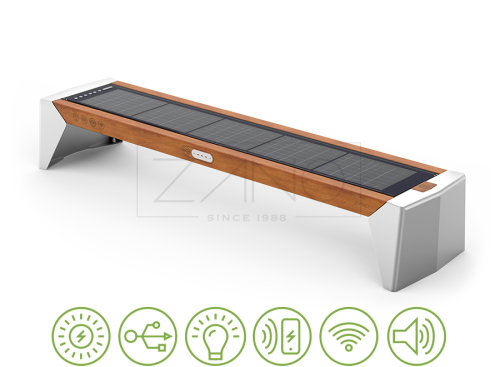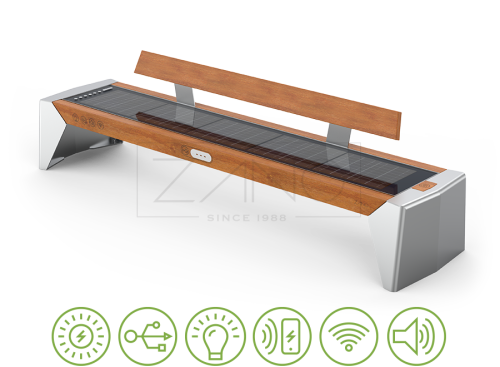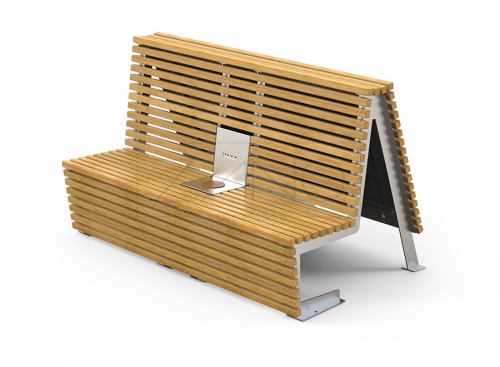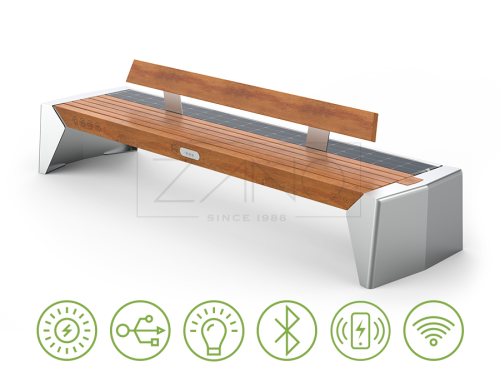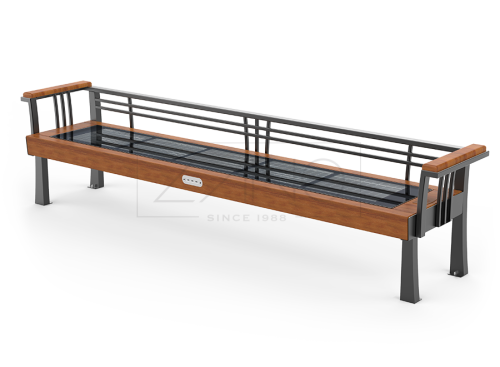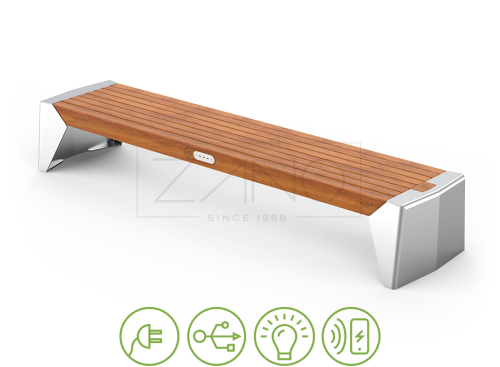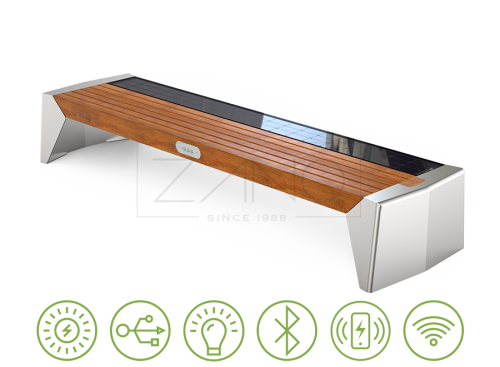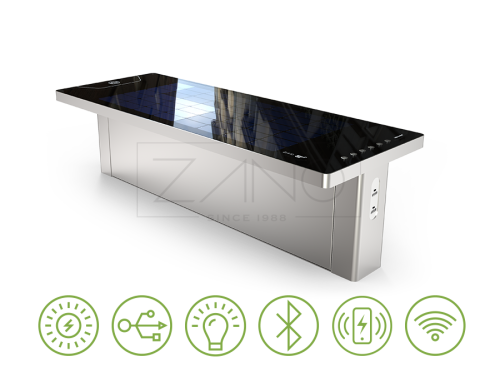
Benches
smart city
Smart city benches from ZANO company represent a perfect blend of innovative technology and modern urban furniture design, built to cater to the dynamic needs of contemporary cities. These benches are not just places to sit, but multifunctional platforms equipped with advanced features designed to enhance the urban experience for residents and visitors alike.
Each bench in this category is constructed with high-quality materials ensuring durability and resistance against various environmental factors. The design of these benches presents a sleek and contemporary look, fitting seamlessly into different urban settings, from city parks and sidewalks to public squares and transport stations. The incorporation of smart technology turns these benches into hubs of convenience and connectivity.
One of the standout features of ZANO's smart city benches is their ability to charge mobile devices. Incorporated solar panels harness solar energy to power charging stations, allowing users to recharge their smartphones and tablets on the go. This eco-friendly solution not only supports the increasing need for connectivity but also promotes renewable energy sources within urban landscapes.
Furthermore, these benches can be equipped with Wi-Fi hotspots, providing free internet access to enhance the functionality of public spaces. This feature is invaluable in today’s connected world, where constant access to the internet supports both leisure and work activities outdoors. Additionally, some benches come with integrated LED lighting, improving visibility and safety during nighttime, enhancing the aesthetics of the area, and extending the usability of outdoor spaces.
The smart city benches also contribute to urban data collection. Equipped with sensors, they can gather valuable data on weather conditions, air quality, and usage patterns. This data can be crucial for city planners and policymakers to understand the environmental impact, optimize maintenance schedules, and make informed decisions to improve city infrastructure and services.
In conclusion, ZANO’s smart city benches are transformative street furniture pieces that offer more than just a resting place. By integrating cutting-edge technology into daily urban infrastructure, these benches provide practical solutions to modern challenges, facilitating a smoother, more enjoyable urban living experience. With sustainability at their core, smart city benches by ZANO not only foster convenience and connectivity but also play a significant role in the evolution of cities towards greener, more efficient, and technologically integrated environments.
